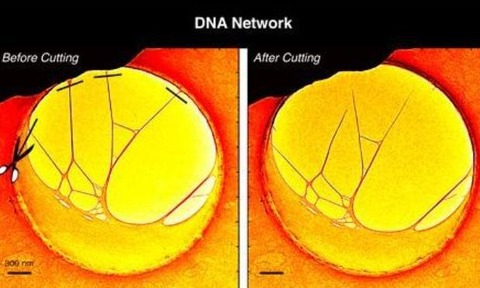4D microscopy offers insights into nanostructures
11 Feb 2013

Caltech has developed a 4D microscope that captures motion of DNA structures in space and time.
Scientists at the California Institute of Technology (Caltech) have developed techniques for visualising the variations in stiffness of biological nanostructures.
“This type of visualisation is taking us into domains of the biological sciences that we did not explore before,” said Caltech’s Nobel Laureate Ahmed Zewail.
Zewail was awarded the 1999 Nobel Prize in Chemistry for his development of femtochemistry, which uses ultrashort laser flashes to observe fundamental chemical reactions occurring at the timescale of the femtosecond.
Although femtochemistry can capture atoms and molecules in motion, giving the time dimension, it cannot concurrently show the dimensions of space, and thus the structure of the material.
This is because it utilises laser light with wavelengths that far exceed the dimension of a nanostructure, making it impossible to resolve and image nanoscale details in tiny physical structures such as DNA.
This techniques has broader applications in the materials science of nanostructures
To overcome this major hurdle, the 4D electron microscope employs a stream of individual electrons that scatter off objects to produce an image.
The electrons are accelerated to wavelengths of picometers, or trillionths of a meter, providing the capability for visualising the structure in space with a resolution a thousand times higher than that of a nanostructure, and with a time resolution of femtoseconds or longer.
The experiments began with a structure created by stretching DNA over a hole embedded in a thin carbon film.
Using the electrons in the microscope, several DNA filaments were cut away from the carbon film so that a three-dimensional, free-standing structure was achieved under the 4D microscope.
Next, the scientists employed laser heat to excite oscillations in the DNA structure, which were imaged using the electron pulses as a function of time – the fourth dimension. By observing the frequency and amplitude of these oscillations, a direct measure of stiffness was made.
Zewail claims that this technique has the potential for broad applications not only to biological assemblies, but also in the materials science of nanostructures.

